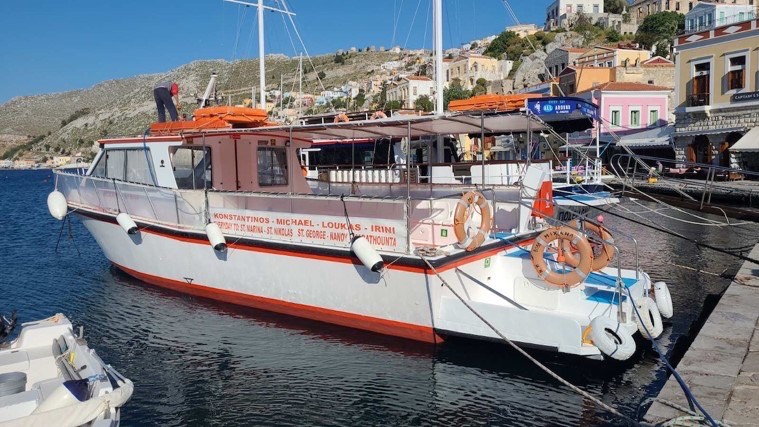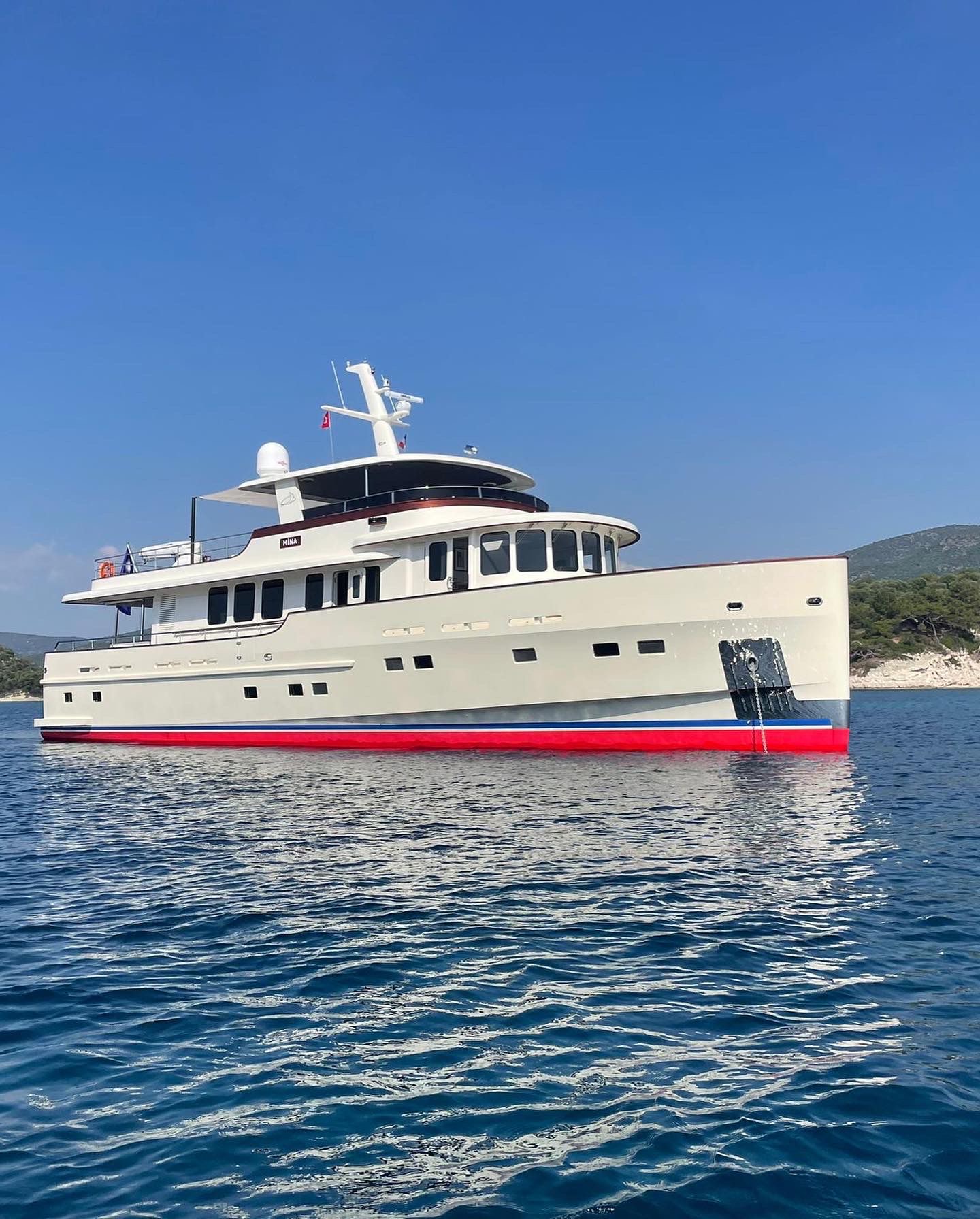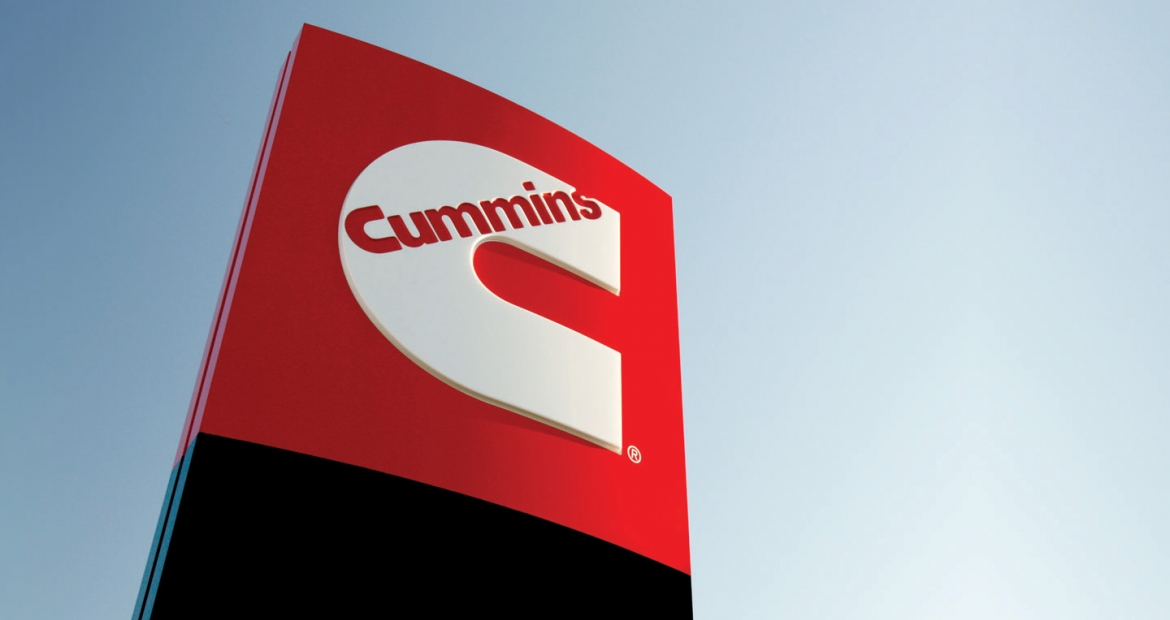
Cummins Vessel Reference #813
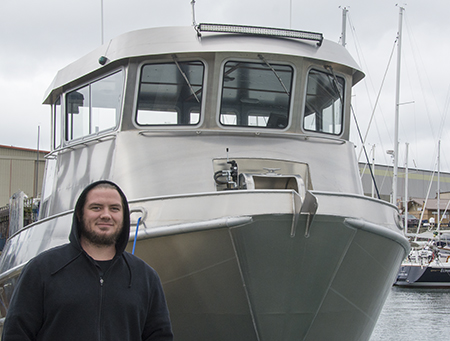
For sheer numbers and intensity, it would be hard to imagine anything more driven than Alaska’s annual Bristol Bay sockeye fishery. Rory Pitsch, one of the owners of Strongback Metal Boats, has grown up with the boats being built at his father’s shops and, for several years, as a crewman on a Bristol Bay gillnetter. Both are central to his thoughts when building another gillnet boat at their Sedro Woolley, Washington shop.

One of the ways to control a fisheries effort is to limit the size of the boats that are permitted in that fishery. Alaska has long had a 58-foot limit on their purse seine boats and a 32-foot limit on the Bristol Bay gillnet boats. In both cases, the limit on length has led fishermen to add beam. The 32 by 15 foot 10-inch hull for Strongback’s latest delivery is becoming typical of modern vessels for the fishery.
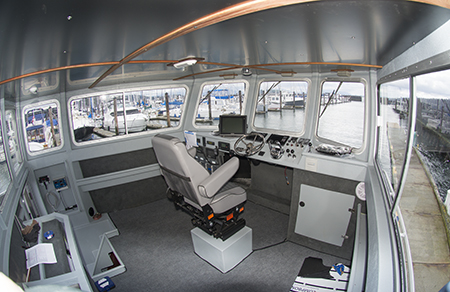
It is the careful layout and arrangement of the fishing and living spaces together with the propulsion that really set this boat amongst the top tier in the fleet. The Bristol Bay fishery is a short intense period of five to seven weeks with a few closures for salmon to escape up river. The town of Naknek grows from a population of about 500 people to around 30,000 during the fishing season. So onboard accommodation is important. This new Strongback boat is designed to fit four bunks in the hull and one in the wheelhouse. The forecastle also features a galley with refrigerator, microwave, coffee maker, and sink. It is a bit of a design miracle but attractive and, for exhausted fishermen, plenty comfortable.
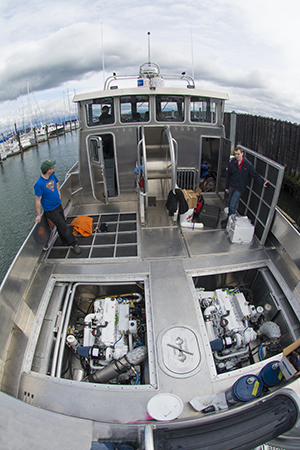
On the starboard side of the cabin a door opens from the deck. Inside is a heated gear locker that also has a head and shower. On the port side a door leads up a short set of stairs to the wheelhouse or down a similar flight of stairs to the accommodations. Just inside this door are a set of controls for the RSW system that is plumbed to the three fish-holds on each side and one in the center the deck, set amid ships, with a total capacity of about 16,500 pounds of salmon.

In the hull, aft of the fishholds, the engine room contains the refrigeration system and other auxiliary services as well as an impressive power source. A pair of Cummins QSC8.3 liter engines each generating 493 HP at 2600-RPM turn into ZF gears. The gears transfer that massive power to a pair of Ultrajet 340 HT drives. Nearly 1000 HP driving a pair of jet pumps will guarantee some impressive speed with any hull. But the guys at Strongback, having built several of these hulls to this design, speak with confidence about the hulls’ light boat performance and their ability to carry loads. Rory’s dad is the founder of All American Marine and, through that firm, developed an association with the well-known New Zealand designer Nick DeWall of Technicraft. To maintain volume inside the nearly 16-foot beam, the beam at the chine is kept to 14.5-feet wide with only a small twelve-degree dead rise at the stern. At the same time the bow is given enough shape to handle the often-choppy waters of Bristol Bay. Light boat speeds on sea trials were 30 knots.

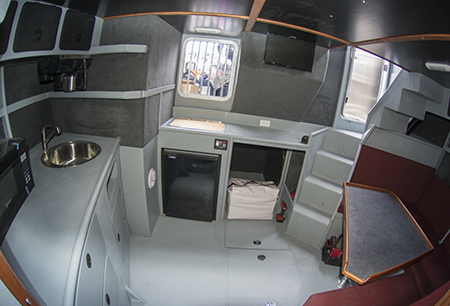
All of this, accommodation and engine power, is designed to support the boat’s real job of catching fish. A single permit in Bristol Bay allows a fisherman to use a 100-fathom long gillnet. With two permits, the fisherman can add another 50 fathoms to make a 150-fathom net. Either quantity of net could he handled by the 72 by 18-inch hydraulic net drum mounted just aft of the cabin. At the stern, 11-feet from the net drum, a live roller leads over the transom. Fitted with a Warn hub the roller can be set to free wheel, usual when hauling back, or to turn outboard when setting to keep tension on the net and prevent backlashes. The long deck provides room for crews to quickly pick fish from the net while it is coming aboard at the same time as providing space for the fish before they are put into the holds. In heavy fishing, the deck can also handle a sizable deck load while they travel to the tender to offload.
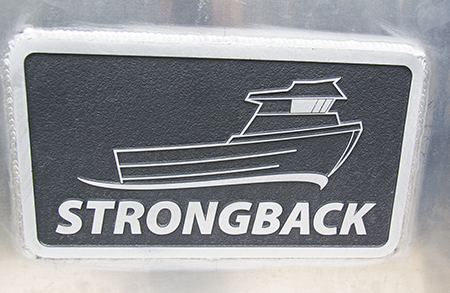
It is still a lot of money for a 32-foot boat like this, but the result is a high performance craft with enough versatility to earn its keep in a variety of roles. It is also a boat that speaks to the demands and the excitement of the Bristol Bay sockeye fishery and to the kind of people who it attracts.
For further information:
Rory Pitsch
Strongback Metal Boats
500 Metcalf St. N3
Sedro Woolley, WA 98284
USA
Phone: 360 296 4519
Mobile: 360 927 4271
E-mail: rory@strongbackmetalboats.com
Joe Tobin
Marine Regional Sales Manager
Cummins Sales and Service
1030 SW 34th St., Suite A
Renton, WA 98057
Phone: 425 235 5400 | Extension 3414
Mobile: 425 757 4220
E-mail: joe.tobin@cummins.com
Trophy fish are measured by weight and length at the dock. They almost always exceed the size of the angler reeling them in. The exception would be M/V Chelsea ...
Greek passenger vessel repowers with Cummins. Cruising to Symi on a water taxi is more than a boat ride across the Aegean Sea. Departing the eastern sh...
Crews with no choice but to head out to sea in rough weather conditions rely on trawlers' inherently robust, stout design based on the DNA of highly capable fis...


